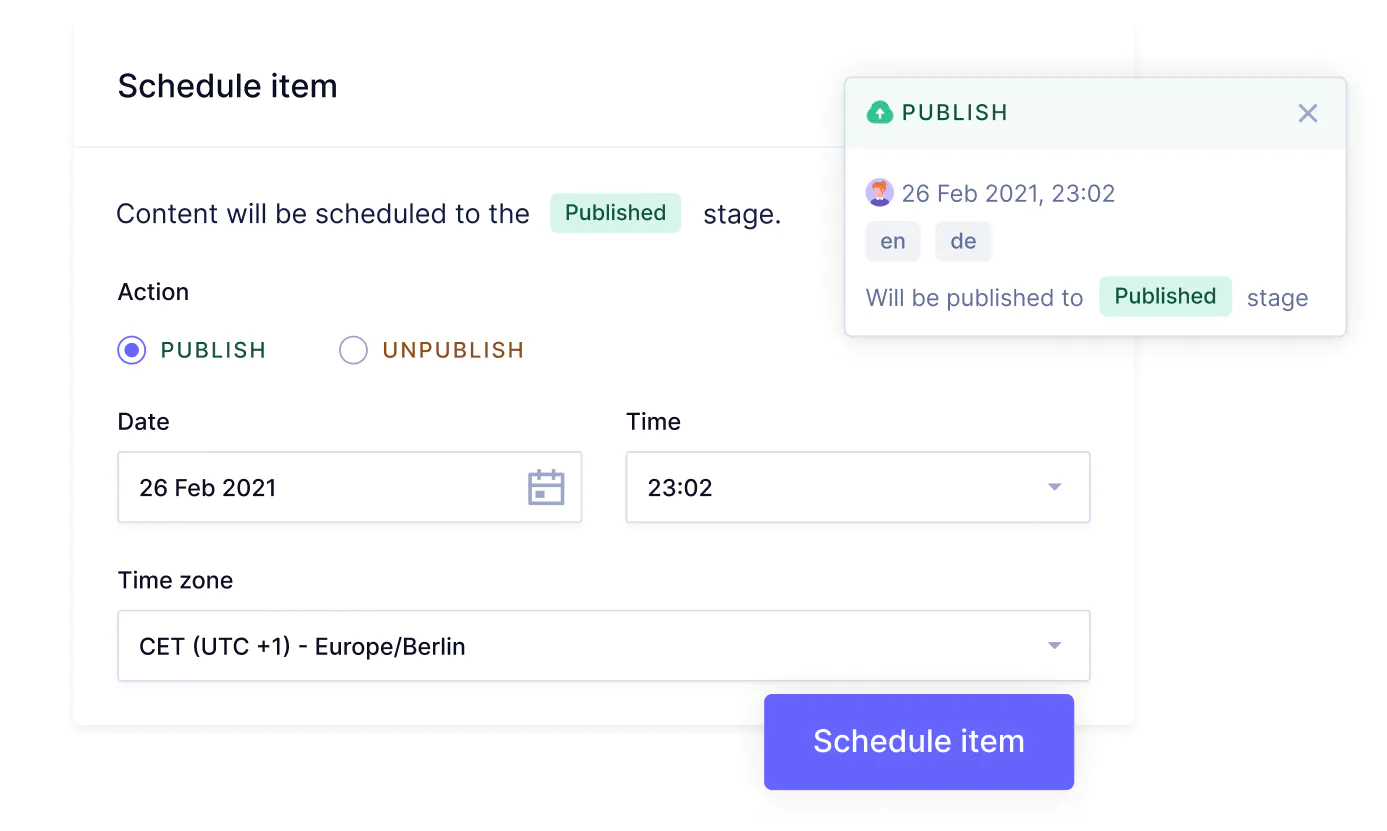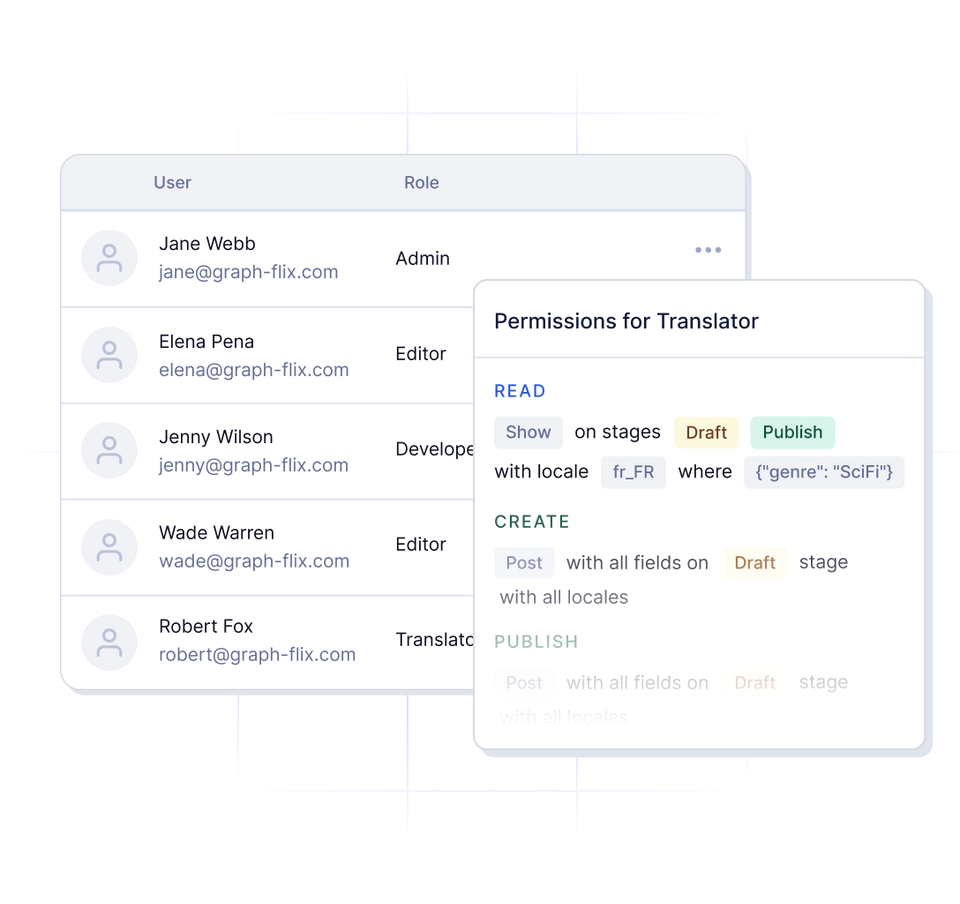Video content was responsible for 65% of all internet traffic in 2022, according to a report on usage data of global service providers, and business models based on live or on-demand video streaming can be found in many industries. Across entertainment, gaming, education, fitness, virtual events, research firms, and government agencies there are organizations that rely on managing and monetizing high volumes of data.
As they tend to deal with multimedia data from many sources, streaming-based businesses can quickly outgrow the capabilities of homebrew content solutions or inflexible content management systems (CMS) designed for more traditional websites. Increasingly, companies with content rich applications are adopting a composable approach to their media platform. This allows them to create a stack of best-fit tools and services for different parts of the platform, with the flexibility to connect and structure data in the way that makes business sense.
This modular approach gives companies a high level of flexibility in creating a streaming platform, but it can be a challenge to orchestrate all the data that lives in different systems and media libraries. This article will take a look at some of the best practices for content management of video streaming and other content rich applications.
Editor's Note
#1. Master metadata to maximize the value of content
The ability to find a video with ease is a critical part of the streaming experience. Good metadata management creates a better user experience, extends the lifetime of each piece by relating it to other content, improves the efficiency of internal processes, and provides more accurate business insights.
Video metadata can cover a wide range of needs, including:
- Data that helps users and search engines find the right content such as descriptions, genres, language, and relations to other media in a series or course.
- Accessibility data like alt text and captions.
- Technical information on the format, structure, and lineage of data.
- Rules around business processes, data quality, and digital rights management.
For metadata to be useful it has to be consistent. If assets are labeled “home kitchen” in the video library, “recipes” in the CMS, and “cooking classes” in the eCommerce system it can take a lot of manual work to piece the right data together. Jumping in and out of different systems to align metadata isn’t very practical, and an API-based CMS can be used as a base where metadata from all systems is pulled into one central place where teams can easily manage it.
For example, Telenor is a Norwegian multinational TelCo company that offers a video streaming service with content from several local television stations. The team uses Hygraph CMS to create a unified metadata structure to efficiently add and categorize two thousand new videos a month that come from many different sources. The bulk of the work is done programmatically, and when manual changes do need to be made the content team has a user interface (UI) where they can review, add, and edit the metadata of any piece of content.
#2. Preschedule publishing for peace of mind
Getting content out at the right time is also important. Customers might expect a certain publishing schedule, there can be time sensitive content for launches and live events, and content might be scheduled differently across time zones and markets. A modern CMS will let you schedule content to be automatically published, and unpublished, so your team isn’t tied to the computer at all hours of the day.
It can be helpful to bundle content into defined releases such as “summer fitness campaign”, “new game launch”, or “Spanish language updates”. Setting up these release bundles in the CMS helps create more internal transparency by providing a bird’s-eye view of all content that’s part of a campaign. It also gives teams more peace of mind by being able to stage and test content ahead of time and ensure that all pieces are released simultaneously.
#3. Strengthen content security with roles and permissions
In a media-based business many people contribute to the content process. Different internal teams, partnering content creators, translation agencies, and other external support staff can all be working in the CMS and setting up granular roles and permissions is key for content security.
Setting up standard roles helps avoid human error by defining which people can view, create, edit, and publish certain content. It also simplifies onboarding and the editing experience by only giving people the access and actions needed to do their job.
Granular permissions are especially crucial for companies that work with confidential information. For example, when gamescom hosted the world’s largest gaming conference virtually in 2021 they had over 200 external content contributors from brands like Microsoft Xbox, Ubisoft, and Bandai Namco all adding confidential launch information into Hygraph CMS. Granular permissions were created so that each user was only able to search for, view, and edit their own content to ensure that no information was leaked. Each brand’s content was bundled into time sensitive releases and launched over the 3 day event to more than 3.5 million virtual attendees.
#4. Structure content to enable both engineering and editorial teams
Companies that need to deliver high volumes of media, from many sources, to multiple channels, in new and engaging ways can find that their CMS becomes a bottleneck. With a traditional, one-size-fits-all CMS, content teams are often stuck using rigid templates and have to ask a developer to make even the smallest change. On the other side of the spectrum, custom in-house solutions often start out very flexible but over time become so hard to scale that engineers spend the majority of their time just maintaining the status quo.
A headless CMS can make life easier for both engineering and content teams. With headless, content is stored in a neutral way on the backend so that it isn’t tied to any specific frontend presentation (the head).
This gives engineers a lot of flexibility to connect various backend systems and create unique data models, while also taking advantage of the CMS vendor’s foundational architecture for performance and scale.
For editorial teams, a modern headless CMS makes it easier to work with many data types and sources to create engaging content that can be reused on any channel. Additionally, because content is highly structured, teams can create custom workflows, improve localization, leverage more automations, and strengthen content governance.
For instance, Statistics Finland uses Hygraph headless CMS to provide key national statistics on populations, housing prices, financial indicators, and more. A headless approach allows the team to structure large amounts of statistical data so it can be easily queried, turned into dynamic tables and graphs, enriched with editorial content, and reused across multiple channels. A clear data structure also allows for very granular permissions so that the team can create workflows that are both efficient and compliant with strict government regulations.
#5. Connect your data sources into a unified content model
As companies add more tools and services to the tech stack, there is an increased risk of content silos. Content rich applications need an efficient way to orchestrate data without clunky middleware, expensive migrations, or data duplication.
Hygraph makes this happen through a process called Content Federation, where data from all backend sources is unified in the CMS with a global schema so that all necessary data can be sent to a frontend using a single GraphQL API call. Taking advantage of the performance benefits that come from the ability of GraphQL APIs to provide just the information needed.
With Hygraph’s Content Federation, data continues to be owned by the original source and as soon as it’s updated in that system the changes are reflected in the Hygraph API. This allows developers to bring together multiple systems without worrying about duplication, and gives content teams access to always up-to-date information in one place.
The education technology company, 2U, uses Hygraph’s Content Federation to manage videos and brand assets of partnering universities to deliver online education. Federation allows the organization to efficiently bring together the various data sources of each university to offer over 500 online classes to more than 300 thousand students across the globe.
#Implementing CMS best practices for video streaming with Hygraph
Hygraph is a next-generation content management platform that offers the Content Federation, metadata management, flexible scheduling, granular permissions, and efficient tools for engineers and content creators that are needed to deliver outstanding content rich applications like video streaming. If you’d like to learn more about how Hygraph can accelerate the next phase of your business, one of our experts would be happy to have a chat.
Blog Author

